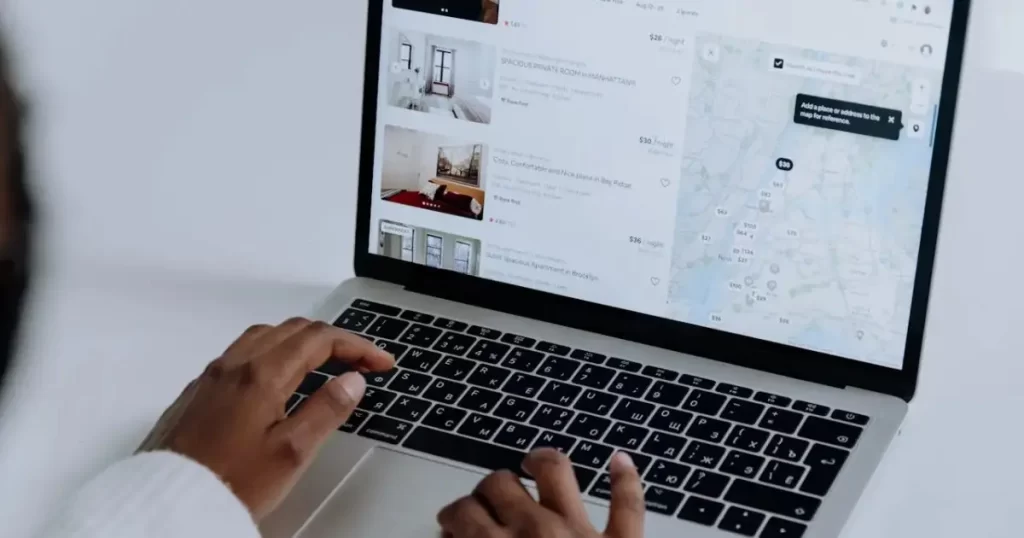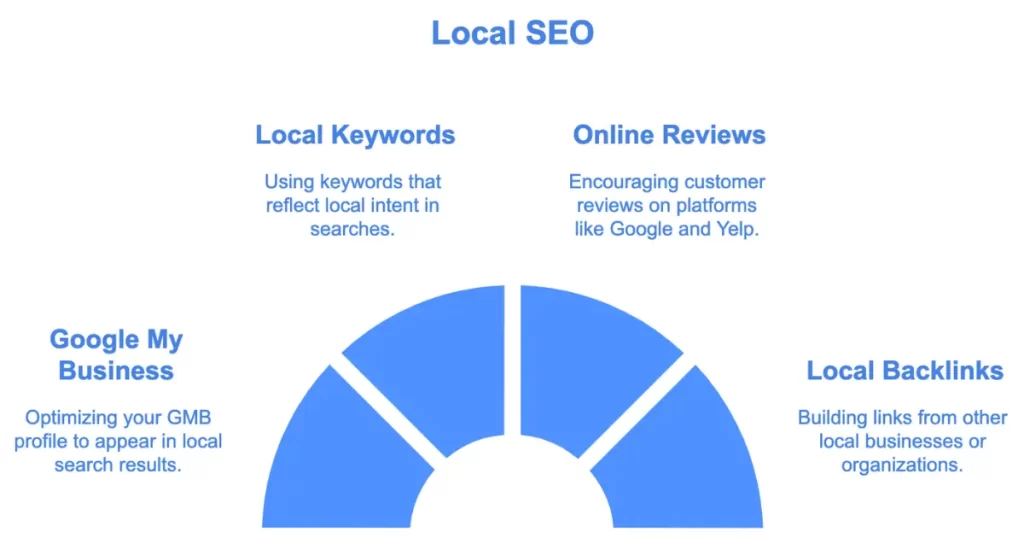Let me guess, you’re a small business owner who’s heard about this whole “local SEO” thing, and it sounds about as fun as doing your taxes, right? Trust me, I’ve been there!
Here’s the deal: if you want local customers to find your business these days, showing up on Google is about as important as having your front door open. Whether you’re running a cozy coffee shop, a neighborhood salon, or a local repair service, you need to wave that digital “Hey, we’re here!” sign.
Now, I know what you’re thinking: “Great, another expensive marketing thing I need to worry about.” But hold onto your wallet! You don’t need to spend big bucks to get noticed online. Seriously – some of the most effective local SEO tricks don’t cost a dime. They just need a bit of know-how and some elbow grease.
Ready to help your neighbors find your business online without breaking the bank? Let’s dive into some wallet-friendly ways to boost your local presence!
Understand the Basics of Local SEO
Before diving into strategies, it’s essential to understand what local SEO is. Local SEO is the process of optimizing your online presence to attract more business from relevant local searches. These searches happen on Google and other search engines, and they target potential customers in your geographic area.
When a customer searches for services or products “near me,” search engines consider their location and deliver relevant results. Local SEO helps ensure that your business appears at the top of these search results, which can increase foot traffic to your store or visits to your website.

Key Local SEO Elements:
- Google My Business (GMB): Optimizing your GMB profile helps your business show up in local search results.
- Local Keywords: Using keywords that reflect local intent (e.g., “best bakery in [City]”).
- Online Reviews: Encouraging customers to leave reviews on platforms like Google, Yelp, or Facebook.
- Local Backlinks: Building links from other local businesses or organizations.
Now, let’s look at ways you can improve your local SEO without spending a fortune.

1. Optimize Your Google My Business (GMB) Profile
Google My Business (GMB) is one of the most powerful tools for local SEO and best of all, it’s free. Claiming and optimizing your GMB profile is crucial for appearing in local search results and Google Maps. To improve your GMB profile:
- Claim Your Profile: If you haven’t already, claim your business profile on Google My Business. This allows you to manage your business information and appear in Google’s local pack.
- Complete Your Profile: Ensure your profile is 100% complete, including your business name, address, phone number (NAP), business hours, website link, and business category. Include detailed information about your services or products.
- Add Photos: Businesses with photos on their GMB profiles get 35% more clicks to their websites than those without.
- Encourage Reviews: Positive reviews not only build trust but also boost your ranking. Encourage your happy customers to leave reviews on your GMB profile.
Pro Tip: Regularly update your GMB profile with new posts, offers, or updates to stay relevant and engage potential customers.
2. Use Local Keywords in Your Content
When people search for local services, they often include the city or area name. For example, someone looking for a plumber in Miami might search for “plumber in Miami” or “best Miami plumber.”
To optimize your website for these searches:
- Research Local Keywords: Use free tools like Google’s Keyword Planner or Ubersuggest to identify keywords with local intent (e.g., “[service] in [city]”).
- Optimize Your Website: Ensure your website includes these keywords in the right places, such as the title tags, meta descriptions, headings, and throughout the content.
- Create Location-Specific Pages: If you operate in multiple locations, consider creating separate pages for each area, optimized with the relevant keywords.
- Use Geo-Targeted Content: Write blog posts or create content that is relevant to your local audience. For example, a bakery might write a blog post about “The Best Pastries in [Your City].”
3. Encourage Customer Reviews and Respond to Them
Reviews play a crucial role in local SEO. Search engines view reviews as a signal of trustworthiness, and positive reviews can significantly improve your rankings. According to a survey, 88% of consumers trust online reviews as much as personal recommendations.
Here’s how to maximize the impact of reviews:
- Ask for Reviews: Don’t be afraid to ask your satisfied customers to leave a review. You can do this in person, via email, or on social media.
- Make It Easy: Provide direct links to your GMB profile, Yelp page, or Facebook account, so customers can quickly leave reviews.
- Respond to Reviews: Whether positive or negative, responding to reviews shows that you care about customer feedback. It can also improve your SEO, as Google likes businesses that engage with their audience.
Pro Tip: Include keywords in your responses where appropriate. For instance, if a customer praises your bakery, you might respond, “We’re glad you enjoyed our pastries at [Bakery Name] in [City].”
4. Build Citations on Local Directories
Local citations are mentions of your business on other websites, usually in online business directories. These citations often include your business’s NAP (name, address, and phone number). The more consistent and accurate your citations, the more likely your business is to appear in local search results.
Here’s how to build local citations without spending a lot:
- List on Free Directories: Many directories, such as Yelp, Bing Places, Apple Maps, and Yellow Pages, allow you to list your business for free.
- Ensure NAP Consistency: Your NAP must be consistent across all directories. Inconsistencies can confuse search engines and hurt your rankings.
- Focus on Local and Niche Directories: List your business in local directories and niche-specific ones (e.g., restaurant directories for a restaurant business).
5. Create High-Quality Local Content
Content is still king when it comes to SEO. Creating high-quality, locally focused content can significantly boost your rankings. You don’t need a large marketing budget to create engaging content that resonates with your local audience.
Here are some ideas for local content:
- Local News or Events: Write blog posts about local news, events, or issues that are relevant to your industry.
- Customer Success Stories: Share testimonials or case studies that highlight how your business helped local customers.
- Collaborate with Local Influencers: Partner with local influencers or bloggers to promote your content and increase your visibility.
Pro Tip: Use storytelling to create a connection with your audience. Instead of just promoting your products, share stories that show how your business is part of the local community.
6. Improve Your Website’s Mobile Experience
Most local searches are done on mobile devices, so having a mobile-friendly website is critical for local SEO. Google favors websites that provide a seamless mobile experience, especially for local searches.
Here’s how to ensure your website is mobile-friendly:
- Responsive Design: Make sure your website adapts to different screen sizes. If you’re not sure if your website is mobile-friendly, you can use Google’s Mobile-Friendly Test tool.
- Fast Load Times: Mobile users expect fast load times. Use tools like Google PageSpeed Insights to check your website’s speed and get recommendations for improvement.
- Simple Navigation: Ensure your mobile site is easy to navigate with clear call-to-action buttons (e.g., “Call Now” or “Get Directions”).
7. Leverage Social Media for Local SEO
While social media signals may not directly impact SEO rankings, having an active presence on platforms like Facebook, Instagram, and Twitter can boost your local visibility. Social media can drive traffic to your website, increase brand awareness, and encourage local engagement.
Here’s how to make the most of social media:
- Optimize Profiles: Ensure your social media profiles are complete, with accurate NAP and links to your website.
- Post Local Content: Share content that is relevant to your local audience, such as promotions, events, or community involvement.
- Engage with Followers: Respond to comments, messages, and reviews on social media. This not only improves engagement but also shows potential customers that you care.
8. Build Local Backlinks
Backlinks (links from other websites to yours) are an important ranking factor for SEO. Local backlinks, in particular, can help improve your local search rankings.
Here’s how to build local backlinks without spending a fortune:
- Partner with Local Businesses: Reach out to complementary local businesses and offer to exchange backlinks. For example, if you own a bakery, you could partner with a local coffee shop.
- Sponsor Local Events: Sponsoring local events can get your business mentioned (and linked) on event websites, local blogs, or news outlets.
- Get Featured in Local Media: Pitch a story to local newspapers or news websites. Being featured in local media can earn you high-quality backlinks.

9. Track Your Results and Make Adjustments
Finally, it’s important to track your local SEO efforts and make adjustments as needed. SEO is not a set-it-and-forget-it strategy; it requires continuous monitoring and optimization.
Here’s how to track your local SEO performance:
- Use Google Analytics: Monitor website traffic and see where your visitors are coming from. Look for increases in local search traffic.
- Track GMB Insights: Google My Business offers insights into how customers find your business and what actions they take (e.g., visits to your website or requests for directions).
- Monitor Rankings: Use tools like SEMrush or Moz Local to track your local search rankings and monitor your competition.
Conclusion
Improving your local SEO doesn’t have to cost a fortune. By optimizing your Google My Business profile, using local keywords, encouraging reviews, building citations, creating local content, and engaging with your community online, you can boost your visibility in local search results.
For small businesses, a strong local SEO strategy can drive more leads, increase sales, and help you stand out from the competition – all without spending a lot of money. Start implementing these strategies today and watch your business grow in your local market.
Take Action Today
Begin improving your local SEO by claiming your Google My Business profile, researching local keywords, and building your online presence. The more effort you put into local SEO, the more benefits you’ll reap in terms of visibility, credibility, and customer engagement.







